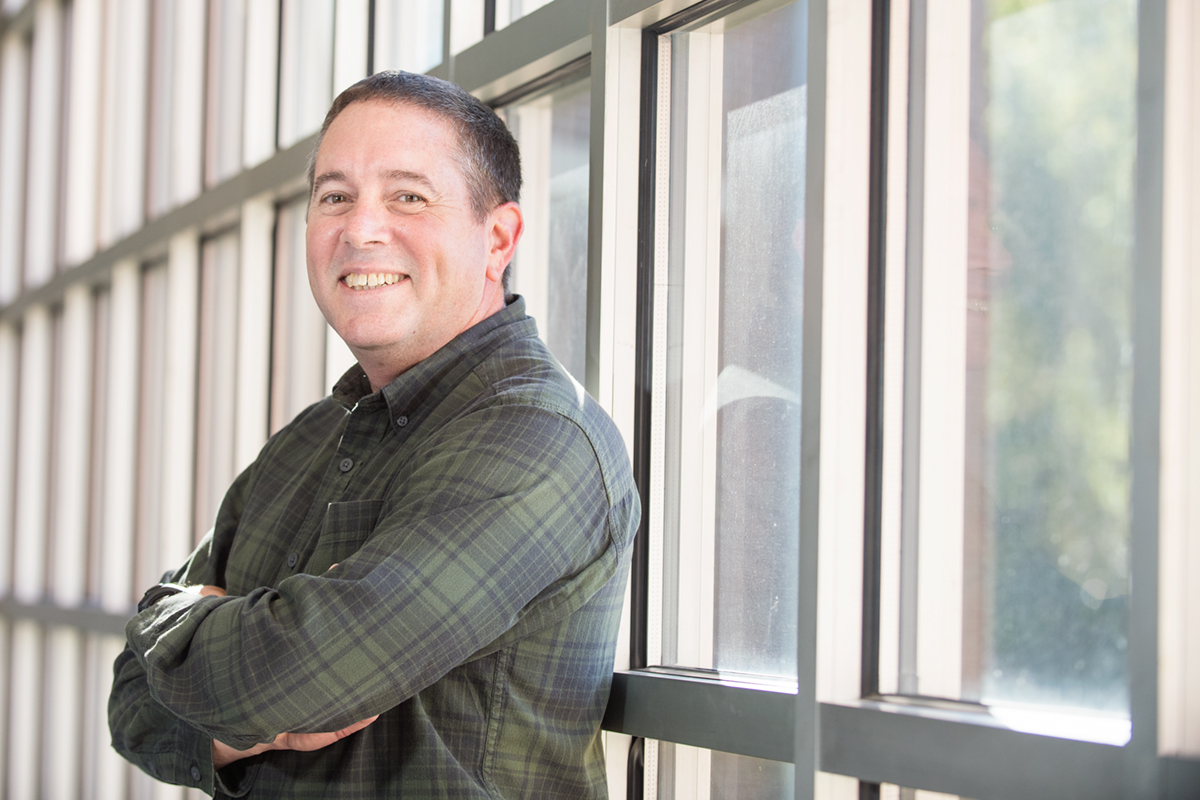John McGinley

As a research engineer in the Human Factors Research Group, John McGinley’s work is never boring. Located within the Center for Advanced Vehicular Systems at Mississippi State, his job focuses on human elements, and how these affect the design of cars and other vehicles.
When discussing the variety of projects he’s been involved in, McGinley said a motions study with the Therapeutic Horseback Riding program once involved using a motion capture system to record and analyze how the motion of horses transfers to riders.
“Instead of being in our nice, clean lab, I was out at the Horse Park kicking around in the dirt. I really did learn a lot. And when people would ask me how that fit in with the mission of CAVS, I would point out that a horse is an ‘advanced vehicular system.’”
McGinley not only earned a bachelor’s degree in computer science in 1997 from MSU, but he also has worked at the university since June 2002, which makes him the longest-serving employee at CAVS to date.
One reason he enjoys working at CAVS is because of the “constantly changing world of research.” Since technology moves so fast, he said no two days are alike.
“I’ve told people that no one ever tells me how to do my job – because most of the time, my job has never been done before.”
McGinley said, hands down, virtual reality is among his most exciting projects. Entities within MSU’s Thad Cochran Research, Technology and Economic Development Park have dabbled in VR since the mid-90’s, but the technology was slow and expensive.
Within the last few years, VR technology has become much more affordable and readily available. McGinley said, “All of a sudden, there are lots of companies selling consumer products that are inexpensive, fast, light, and have fantastic graphics. For the first time ever, our group is able to use VR to do research that is either too expensive or too dangerous to do in the real world. VR gives us a safe, controlled environment that is relatively easy to develop and use.”
One project with Nihon University in Tokyo focuses on human modeling for autonomous vehicle development. The project examines how humans naturally react to autonomous vehicles when they encounter them in the real world. For example, how can an autonomous vehicle alert a person crossing the street that it is safe to cross? What if they are blind, deaf, color-blind, or cannot read or understand English? Will the human trust the driver-less car? An experiment like this in the real world would be nearly impossible due to logistics, costs and liability, McGinley explained, but VR technology helps address these research questions.
CAVS has opportunities for students to assist with projects such as these. McGinley said CAVS is always on the lookout for those who are “bright and hungry to learn...from a variety of majors, not just engineering.”